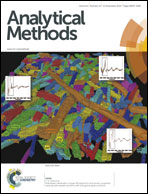An enhanced direct electrochemistry of glucose oxidase at poly(taurine) modified glassy carbon electrode for glucose biosensor
Abstract
A novel method for detecting glucose that employs glucose oxidase (GOx) at polytaurine (p-taurine)-modified glassy carbon electrode is reported. The polymerization of taurine was assessed by a simple electrochemical approach. The electro-polymerized p-taurine was confirmed by X-ray photoelectron spectroscopy (XPS) and scanning electron microscopy (SEM). Notably, we obtained a good peak-to-peak separation (ΔEp) of 46 mV for p-taurine/GOx/Nf-modified GCE, indicating an excellent electron transfer process between GOx and the p-taurine-modified electrode. The fabricated composite p-taurine/GOx/Nf provides excellent electrocatalytic activity towards glucose detection. In this investigation, the glucose sensor has been achieved by reductive detection of oxygen consumption without a mediator. The detection of glucose was monitored using cyclic voltammetry (CV) and differential pulse voltammetry (DPV). The obtained limit of detection (LOD) and sensitivity of the proposed glucose sensor were 0.06 mM and 26.58 μA−1 mM cm−2, respectively Moreover, the facile biosensor based on the Tau/GOx/Nf composite is preferred due to its simplicity, long-term stability, ultra high sensitivity, reliability, and durability, rendering practical applications even for real sample systems.


 Please wait while we load your content...
Please wait while we load your content...